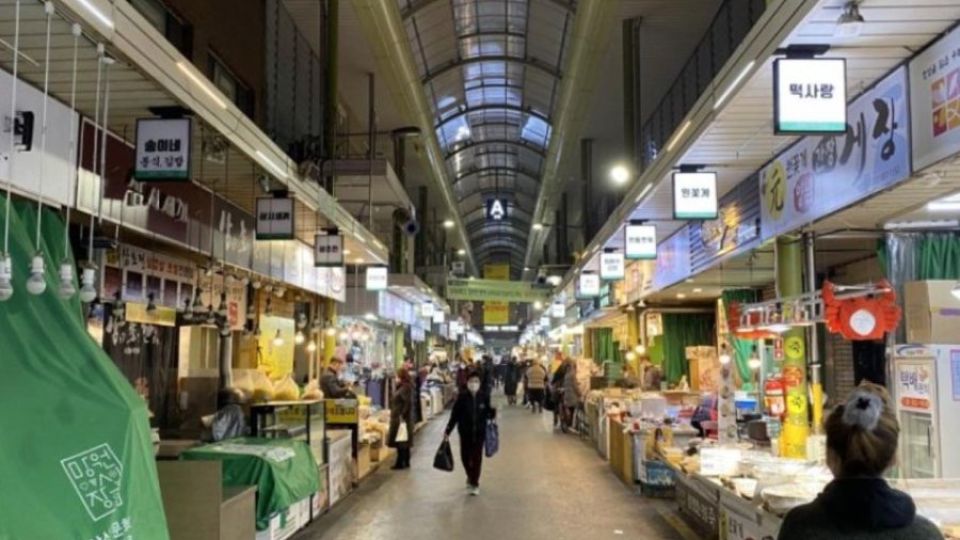April 14, 2023
SEOUL – The International Monetary Fund on Tuesday lowered its 2023 economic growth outlook for South Korea to 1.5 percent, marking the fourth straight trimming since July last year.
The revised IMF outlook for Korea — a 0.2 percentage-point drop from its estimate in January — did not come as a big surprise in consideration of the latest tumult sparked by fears of the banking crisis in the US and Europe, as well as other data pointing to a slowdown in various industrial sectors.
The IMF’s 2023 growth estimate for Korea is largely in line with the forecast of the Organization for Economic Cooperation and Development, which lowered its estimate to 1.6 percent last month.
But given the wobbly conditions in the global economy, a series of downgraded outlooks underscore the depth of risks facing Asia’s fourth-biggest economy, which depends heavily on exports for its growth momentum.
The IMF downgraded its global economic outlook this year to 2.8 percent, compared to the 2.9 percent estimate in its previous forecast in January, amid lingering uncertainties such as rising inflation and high interest rates around the world.
“Inflation is much stickier than anticipated even a few months ago,’’ Pierre-Olivier Gourinchas, the IMF’s chief economist, wrote in the fund’s latest World Economic Outlook.
The IMF forecast global inflation would stand at 7 percent this year, up from its January estimate of 6.6 percent for 2023. Global inflation was 8.7 percent last year.
Stubbornly high inflation is expected to push central banks to raise rates or maintain them at a high level in a bid to keep inflation under control. This translates into higher borrowing costs, which in turn could negatively affect companies and individuals.
Against this backdrop, the Bank of Korea kept the benchmark seven-day repo rate unchanged at 3.5 percent Tuesday, a widely expected decision that follows a rate freeze in February.
Experts warned that the central bank’s pause seems inevitable at this point as it is crucial to block the domestic economy from sliding into a deeper slowdown, but it could bring about side effects such as a flight of foreign capital due to the widening gap in interest rates with the US.
The US Federal Reserve raised interest rates to a range of 4.75 percent to 5 percent on March 22, even though some policymakers at the Fed considered pausing the rates following failures of two regional banks.
More worrisome is that the US economy could fall into a mild recession later this year in the wake of the fallout from a banking crisis, according to the Fed’s March policy meeting.
Despite the greater likelihood of a recession, Fed officials signaled that they could raise interest rates at their next meeting to combat high inflation and a tight labor market, according to US media reports.
BOK policymakers, which have opted for back-to-back freezes, are now expected to monitor how the latest financial turmoil unfolds before considering the possibility of a quarter-point rate hike in the coming months.
In terms of inflation, the central bank is in no position to talk about rate cuts, as Gov. Rhee Chang-yong told reporters Tuesday. South Korea’s consumer prices, the main gauge of inflation, rose 4.2 percent in March from a year earlier. The level was the slowest since the recent peak of 6.3 percent in July last year, but still far above the BOK’s midterm inflation target of 2 percent.
The central bank also said the economic growth will be “slightly” below the February forecast of 1.6 percent, cautioning that uncertainties remain.
A host of negative factors remain volatile for the Korean economy, with 66 percent of local manufacturers reportedly struggling to turn a profit and a growing number of cash-strapped small retailers going bankrupt. Financial risks are also growing, especially in connection with real estate project financing.
The Korean currency also continues to lose value against the US dollar, in a sharp contrast to the rising value of other major currencies, a sign that some economists say the fundamentals of the country’s economy centered on exports are weakening.
As the IMF points out, Korea, once a rapidly growing economy, confronts a growth slowdown, which may reflect “more ominous forces” in the world economy. Policymakers should take note of the warning and prepare against stronger headwinds ahead.


